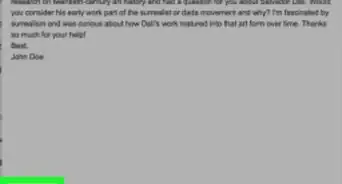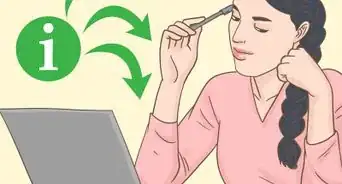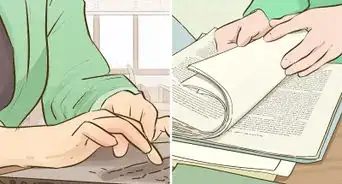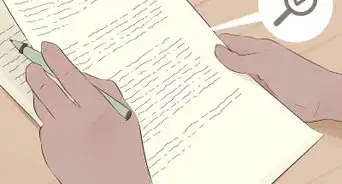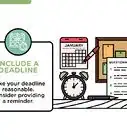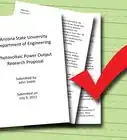This article was co-authored by Richard Perkins. Richard Perkins is a Writing Coach, Academic English Coordinator, and the Founder of PLC Learning Center. With over 24 years of education experience, he gives teachers tools to teach writing to students and works with elementary to university level students to become proficient, confident writers. Richard is a fellow at the National Writing Project. As a teacher leader and consultant at California State University Long Beach's Global Education Project, Mr. Perkins creates and presents teacher workshops that integrate the U.N.'s 17 Sustainable Development Goals in the K-12 curriculum. He holds a BA in Communications and TV from The University of Southern California and an MEd from California State University Dominguez Hills.
wikiHow marks an article as reader-approved once it receives enough positive feedback. This article has 24 testimonials from our readers, earning it our reader-approved status.
This article has been viewed 1,377,579 times.
Summarizing a journal article is the process of presenting a focused overview of a completed research study that is published in a peer-reviewed, scholarly source. A journal article summary provides potential readers with a short descriptive commentary, giving them some insight into the article's focus. Writing and summarizing a journal article is a common task for college students and research assistants alike. With a little practice, you can learn to read the article effectively with an eye for summary, plan a successful summary, and write it to completion.
Steps
Reading Article
-
1Read the abstract. Abstracts are short paragraphs written by the author to summarize research articles. Abstracts are usually included in most academic journals and are generally no more than 100-200 words. The abstract provides a short summary of the content of the journal article, providing you with important highlights of the research study.
- The purpose of an abstract is to allow researchers to quickly scan a journal and see if specific research articles are applicable to the work they are doing. If you're collecting research on immune system responses in rodents, you'll be able to know in 100 words not only whether or not the research is in your field, but whether the conclusions back up your own findings, or differ from it.
- Remember that an abstract and an article summary are two different things, so an article summary that looks just like the abstract is a poor summary.[1] An abstract is highly condensed and cannot provide the same level of detail regarding the research and its conclusions that a summary can.[2]
-
2Understand the context of the research. Make sure you know what specifically the authors will be discussing or analyzing, why the research or the topic matters, whether or not the article is written in response to another article on the topic, etc. By doing this, you'll learn what arguments, quotes, and data to pick out and analyze in your summary.Advertisement
-
3Skip to the conclusion. Skip ahead to the conclusion and find out where the proposed research ends up to learn more about the topic and to understand where the complicated outlines and arguments will be leading. It's much easier to comprehend the information if you read the researchers' conclusions first.
- You still need to go back and actually read the article after coming to the conclusion, but only if the research is still applicable. If you're collecting research, you may not need to digest another source that backs up your own if you're looking for some dissenting opinions.
-
4Identify the main argument or position of the article. To avoid having to read through the whole thing twice to remind yourself of the main idea, make sure you get it right the first time. Take notes as you read and highlight or underline main ideas.
- Pay special attention to the beginning paragraph or two of the article. This is where the author will most likely lay out their main ideas for the entire article. Figure out what the "thesis" is and determine the main argument or idea that the author or authors are trying to prove with the research.
- Look for words like hypothesis, results, typically, generally, or clearly to give you hints about which sentence is the thesis.
- Underline, highlight, or rewrite the main argument of the research in the margins. Keep yourself focused on this main point, so you'll be able to connect the rest of the article back to that idea and see how it works together.
- In the humanities, it's sometimes more difficult to get a clear and concise thesis for an article because they are often about complex, abstract ideas (like class in post-modern poetics, or feminist film, for example). If it's unclear, try to articulate it for yourself, as best as you can understand the author's ideas and what they're attempting to prove with their analysis.
- Try to analyze the author's tone, looking at some of the keywords that really tells you what they are trying to get across to you.
- Pay special attention to the beginning paragraph or two of the article. This is where the author will most likely lay out their main ideas for the entire article. Figure out what the "thesis" is and determine the main argument or idea that the author or authors are trying to prove with the research.
-
5Scan the argument. Continue reading through the various segments of the journal article, highlighting main points discussed by the authors. Focus on key concepts and ideas that have been proposed, trying to connect them back to that main idea the authors have put forward in the beginning of the article.
- Different areas of focus within a journal article will usually be marked with subsection titles that target a specific step or development during the course of the research study. The titles for these sub-sections are usually bold and in a larger font than the remaining text.
- Keep in mind that academic journals are often dry reading. Is it absolutely necessary to read through the author's 500 word proof of the formulas used in the glycerine solution fed to the frogs in the research study? Maybe, but probably not. It's usually not essential to read research articles word-for-word, as long as you're picking out the main idea, and why the content is there in the first place.
-
6Take notes while you read. Efficiency is key when you're doing research and collecting information from academic journals. Read actively as you comb through the material. Circle or highlight each individual portion of the journal article, focusing on the sub-section titles.[3]
- These segments will usually include an introduction, methodology, research results, and a conclusion in addition to a listing of references.
Planning Draft
-
1Write down a brief description of the research. In a quick free write, describe the academic journey of the article, listing the steps taken from starting point to concluding results, describing methodology and the form of the study undertaken.There is no need to be too specific; that's what the actual summary will be for.
- When you're first getting started, it's helpful to turn your filter off and just quickly write out what you remember from the article. These will help you discover the main points necessary to summarize.
-
2Decide what aspects of the article are most important. You might refer to these as the main supporting ideas, or sections, of the article. While these may be marked clearly with subheadings, they may require more work to uncover. Anything that's a major point used to support the main argument of the author needs to be present in the summary.
- Depending on the research, you may want to describe the theoretical background of the research, or the assumptions of the researchers. In scientific writing, it's important to clearly summarize the hypotheses the researchers outlined before undertaking the research, as well as the procedures used in following through with the project. Summarize briefly any statistical results and include a rudimentary interpretation of the data for your summary.
- In humanities articles, it's usually good to summarize the fundamental assumptions and the school of thought from which the author comes, as well as the examples and the ideas presented throughout the article.
-
3Identify key vocabulary to use in the summary. Make sure all the major keywords that are used in the article make it into your summary. It's important that you fully examine the meanings of these more complicated terms so that your summary reader can grasp the content as you move forward with the summary.
- Any words or terms that the author coins need to be included and discussed in your summary.
-
4Aim to keep it brief. Journal summaries don't need to be anywhere close to the length of the articles themselves. The purpose of the summary is to provide a condensed but separate description of the research, either for use for the primary research collector, or to help you redigest the information at a later date in the research process.
- As a general rule of thumb, you can probably make one paragraph per main point, ending up with no more than 500-1000 words, for most academic articles. For most journal summaries, you'll be writing several short paragraphs that summarize each separate portion of the journal article.
Writing Summary
-
1Do not use personal pronouns (I, you, us, we, our, your, my).
-
2Keep the tone as objective as possible. You're not critiquing the article, you're giving an overview of it.
-
3Start by defining the research question. Toward the beginning of the article, possibly in the introduction, the authors should discuss the focus of the research study and what the targeted objectives were for conducting the research. This is where your summary should begin. Describe, in your own words, the main argument the authors hope to prove with their research.
- In scientific articles, usually there is an introduction which establishes the background for the experiment or study, and won't provide you with much to summarize. It will be followed by the development of a research question and testing procedures, though, which are key in dictating the content for the rest of the article.
-
4Discuss the methodology used by the authors. This portion discusses the research tools and methods used during the study.[4] In other words, you need to summarize how the authors or researchers came to the conclusions they came to with first-hand research or data collection.
- The specifics of the testing procedures don't usually need to be included in your summary in their entirety; they should be reduced to a simple idea of how the research question was addressed. The results of the study will usually be processed data, sometimes accompanied by raw, pre-process data. Only the processed data needs to be included in the summary.
-
5Describe the results. One of the most important parts of the summary needs to be describing what the authors accomplished as a result of their work.[5] Were the authors successful and did they meet their objectives for conducting the research? What conclusions have the authors drawn from this research? What are the implications of this research, as described in the article?
- Make sure your summary covers the research question, the conclusions/results, and how those results were achieved. These are crucial parts of the article and cannot be left out.
-
6Connect the main ideas presented in the article. For some summaries, it's important to show how the relationships among the ideas presented by the authors develop over the course of the article. The primary objective of the summary is to present a brief overview of the authors' essential points to the reader, making it important that you unpack those arguments and explain them in your own words. Fill in the blanks and assumptions, helping to clarify the research and summarize it briefly.
- This is sometimes more important in summaries dealing with articles in the humanities. For example, it might be helpful to unpack dense arguments about poet George Herbert's relationship to the divine with more pedestrian summaries: "The author seeks to humanize Herbert by discussing his daily routines, as opposed to his philosophies."
-
7Don't draw your own conclusions. A summary of an article shouldn't editorialize, or offer your own interpretations of the data, unless explicitly stated as part of the assignment. In general, the point of a summary is to summarize the authors' points, not to offer your own additions and editorials.
- This can be difficult for some inexperienced research writers to get the hang of at first, but remember to keep the "I" out of it.
-
8Refrain from using direct quotations of text from the journal article. Quotations are more often used when writing a college paper or essay, and are less important for a journal article summary. Focus more on paraphrasing the ideas when writing a journal article summary without losing focus of their meaning and intended content.
-
9Use present tense. Always use the present tense when you are discussing the contents of a scholarly article. This will help you maintain a parallel grammatical structure throughout.
-
10Revise your draft. Good writing happens in revision. Go back and compare the focus and content of what you have written to see that it matches and supports the context of the journal article. A journal article that has been properly summarized provides potential readers with a short review, which is important when they are browsing and searching for specific information about a particular topic.
- Check verbs after writing. If you're using the same ones over and over, your reader will get bored. In this case, try to go back and really see if you can make really efficient choices.
Sample Summaries
Community Q&A
-
QuestionHow do I summarize a referee journal article?
 Community AnswerA "refereed" journal article is the same as a peer-reviewed journal article. This just means that all of the content has been fact-checked by a panel of experts before being approved for publication. All of the above steps apply.
Community AnswerA "refereed" journal article is the same as a peer-reviewed journal article. This just means that all of the content has been fact-checked by a panel of experts before being approved for publication. All of the above steps apply. -
QuestionStep 6 says to take notes while I read. Is it a good idea to take notes while scanning or should I just take notes after?
 Daniela AlvarezCommunity AnswerTake notes while scanning to remember what interested you the most. Afterwards, go back, if the article will be used, to understand those topics better so that if you had to explain it to someone, you could without a problem.
Daniela AlvarezCommunity AnswerTake notes while scanning to remember what interested you the most. Afterwards, go back, if the article will be used, to understand those topics better so that if you had to explain it to someone, you could without a problem. -
QuestionHow can I write a summary of multiple articles?
 Taqi AnwarCommunity AnswerRead all articles and write separate summaries. Then summarize the similar summaries once again; hence you will get two to three similar drafts. Now finally write the main points of these narrowed down drafts in one article.
Taqi AnwarCommunity AnswerRead all articles and write separate summaries. Then summarize the similar summaries once again; hence you will get two to three similar drafts. Now finally write the main points of these narrowed down drafts in one article.
References
About This Article
To summarize a journal article, start by reading the author's abstract, which tells you the main argument of the article. Next, read the article carefully, highlighting portions, identifying key vocabulary, and taking notes as you go. In your summary, define the research question, indicate the methodology used, and focus mostly on the results of the research. Use your notes to help you stay focused on the main argument and always keep your tone objective—avoid using personal pronouns and drawing your own conclusions. For tips on how to read through the journal article thoroughly, such as starting with the conclusion, keep reading!
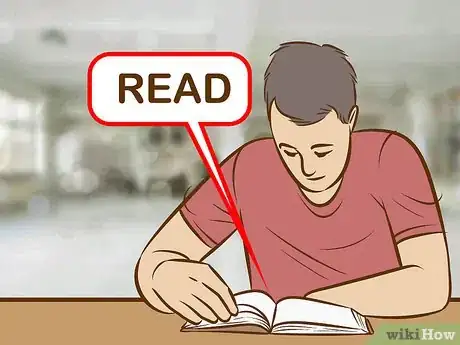
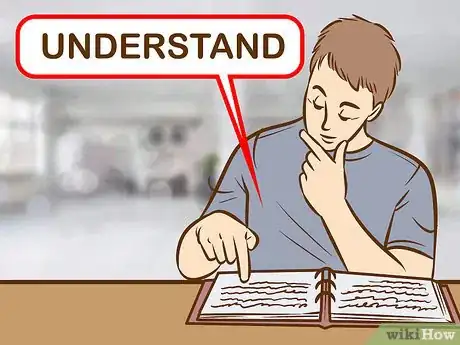
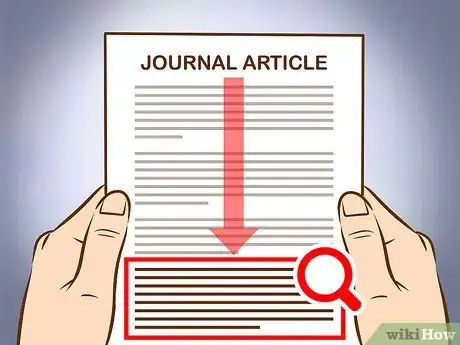
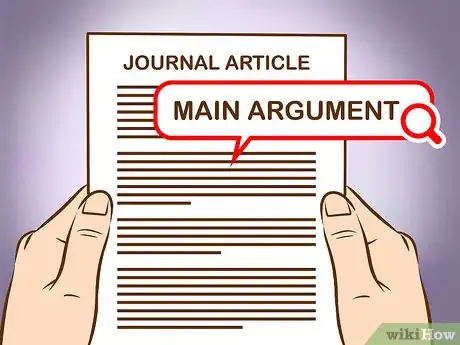


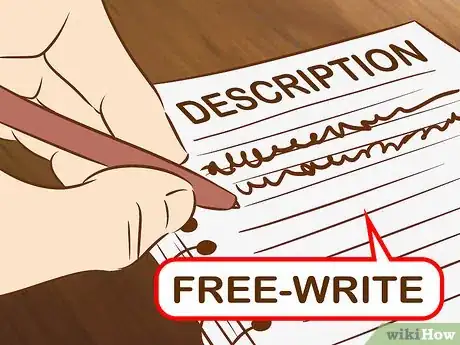

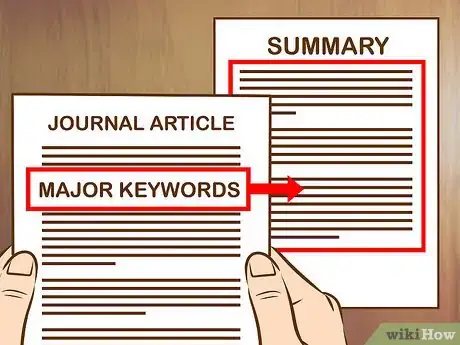
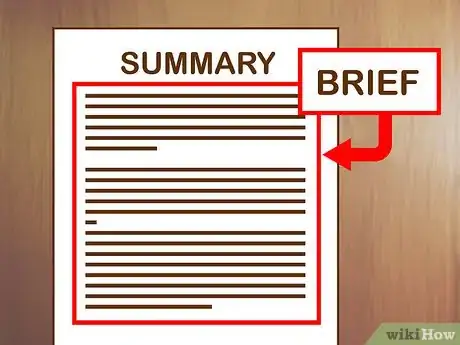


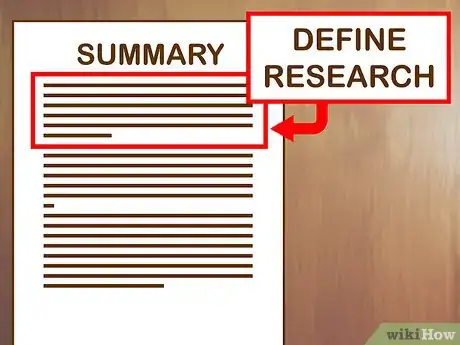
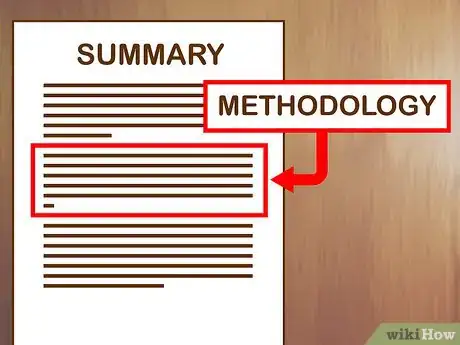
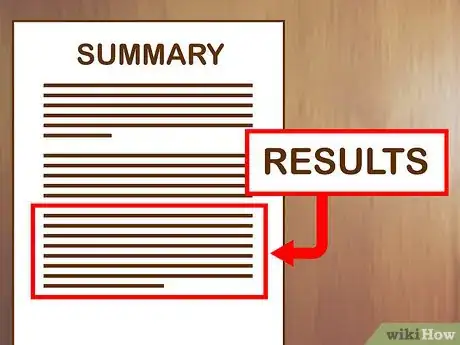
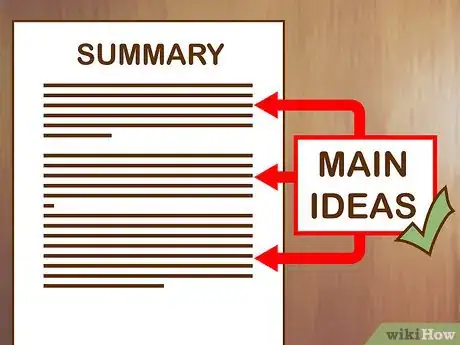
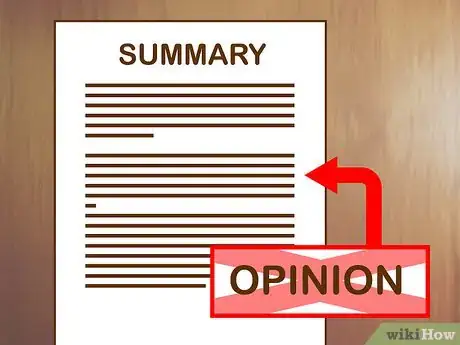
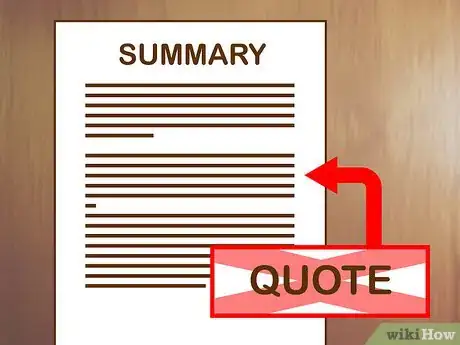
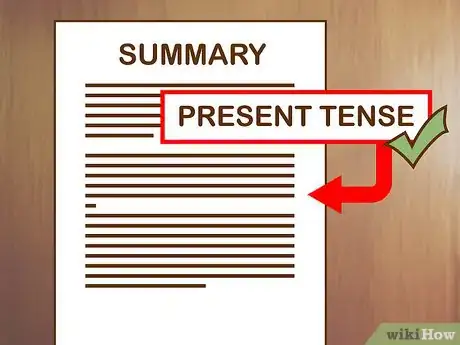
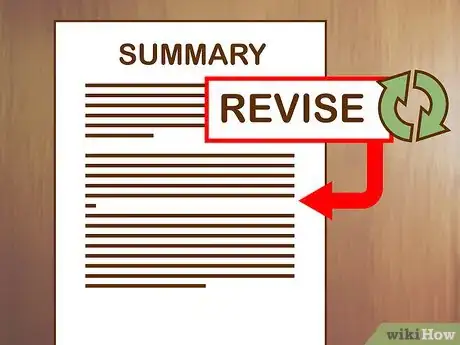
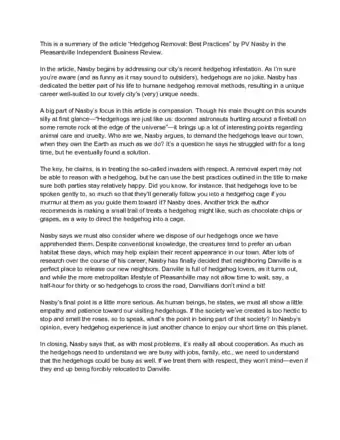
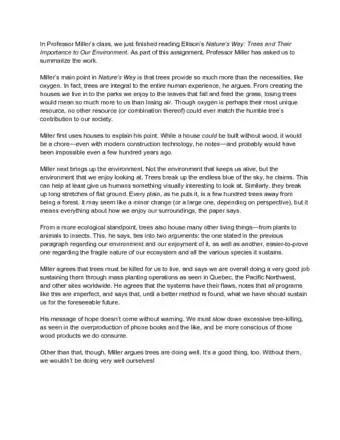
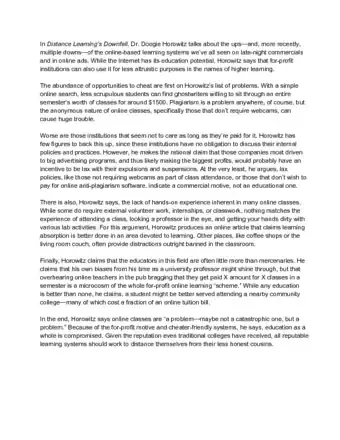

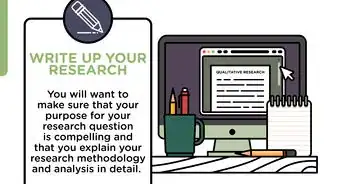
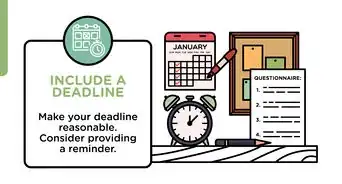
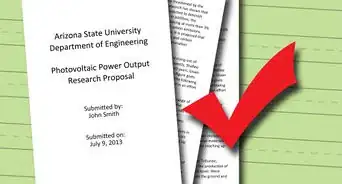
-Step-17.webp)
